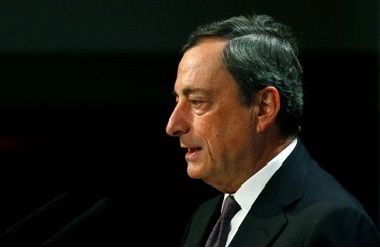(Reuters) - The world’s top 30 banks face a higher minimum requirement for their broadest measure of capital, global regulators said on Monday as they flagged a two-tier leverage ratio regime for the first time.
The leverage ratio refers to the amount of capital to a bank’s non-risk weighted assets, and was set at a preliminary level of 3% in the aftermath of the 2007–09 financial crisis.
It is meant to act as a “backstop” to a bank’s core capital ratios which are based on the riskiness of assets.
The Group of Central Bank Governors and Heads of Supervision (GHOS) said it agreed on Sunday that the permanent level should remain at 3 percent for the bulk of lenders across the world in an announcement that will give the sector much welcomed clarity.
GHOS, however, said it discussed “additional requirements” for the world’s 30 “globally systemic banks” which include Goldman Sachs, HSBC, Deutsche Bank and BNP Paribas.
“The GHOS will finalise the calibration in 2016 to allow sufficient time for the leverage ratio to be implemented… by 1 January 2018,” it said in a statement.
The regulators have yet to decide what form the extra requirements should take, such as a flat surcharge or a graduated increase, depending on how big a bank is.
The United States, Switzerland and Britain already expect their biggest banks to have a leverage ratio of 4 to 6 percent, well above the current Basel minimum.
GHOS also signed off on new rules from 2019 that will make it harder for banks to exploit different capital requirements for their main banking and trading arms.
It said it would publish the package, known as the fundamental review of the trading book, later this week. It is expected to scale back capital charges from what was originally proposed after banks said they would make trading uneconomic.
Clear path
Banks have long called for clarity on the final shape of regulation so they can decide on which lines of business they want to stay in.
GHOS Chairman and European Central Bank President Mario Draghi said the agreements reached on Sunday provide a “clear path” for completing banking regulation after the financial crisis.
The trading book review, as the new package is called, takes a more rigorous approach to supervising the so-called internal models that big banks use to work out how much capital they should hold in case swaps turn sour.
Most lenders calculate capital using standard rules from the regulators, but big banks use their own models, which typically save on the amount of capital required.
But regulators have noted wide differences in how much capital is held by different lenders to cover essentially similar portfolios and the new rules will help correct this.
The Basel Committee of banking supervisors, which GHOS oversees, will assess the theoretical impact of the new rules this year ahead of implementation in 2019.
“As a result of this assessment, the committee will focus on not significantly increasing overall capital requirements,” it added.
Banks accused regulators of introducing “Basel IV” with the trading book review, meaning a step change in capital requirements from Basel III, the world’s core regulatory response to the financial crisis.
Bank of England Governor Mark Carney has repeatedly dismissed talk of a Basel IV in the making.
GHOS also agreed that Basel will launch two public consultations this year on further work, including on stopping the use of internal models for assessing operational risks.
The second consultation will consider extra curbs on internal model use for credit risk, such as by using capital “floors”, the statement said.
